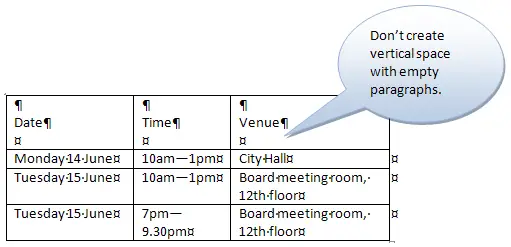
Insert Vertical Lines In Word How To Type Vertical
Out of many ways to divide document into sections, you can simply make use of Word 2010 build-in horizontal line option to insert a divider. For inserting horizontal line, place the insert cursor where you want to insert it and head over Home tab, from Paragraph group, click drop-down button and select Horizontal Line as shown below.Using the Text Direction command on the RibbonHere you may to know how to type vertical line in word. Watch the video explanation about How To Insert Vertical Lines In Microsoft Word Online, article.As you already know, Word allows you to add columns to your page layout.

However, you can automate it to a degree by making multiple paragraph styles, each based on a single style — such as rule_1line, rule_2line, rule_3line, and so on.Another problem with this is that it won’t break across two columns or pages. Just make a really, really thick Rule Above (or below) and adjust its vertical and horizontal offsets so that it’s placed in the proper position:The main problem with this technique is that you need to change the rule thickness (weight) depending on how many lines there are in the paragraph. More after the jump! Continue reading below↓Free and Premium members see fewer ads! Sign up and log-in today.One of the easiest methods for creating a vertical rule is the ol’ Rule Above technique. To make the text more apparent, adjust the shape afterward.NOTE: Use this same method discussed above to type text vertically in Word using text boxes. Type Text Vertically using TablesWhen working with tables in Microsoft Word, the text must not always flow from left to right. With some settings, you can type text that flows vertically in the table cells.Without any further ado, below are the steps to type text and make it flow vertically in Word.
This converts the paragraph into a single-celled table. Single-Cell TableAnother option is to select a paragraph (but don’t select the final, invisible return character at the end of the paragraph) and choose Table > Convert Text to Table. It would be easier than doing it in InDesign.
I added a left cell inset of 1 pica, which pushed the text to the right. Here’s how I did it above: Now you just need to tell InDesign to stroke one side of the table and not the other three sides, which you can easily do in the Stroke panel:Note that the tricky thing here is to get the text to align properly.
I made the cell width 1 pica wider (in the Control panel or the Table panel) Perhaps for an obscure feature of the week-eek-eek. I must figure that out someday. To be honest, the values in the space before and after on tables remain a mystery to me. I set the space before and space after in the Table Options dialog box so that the table seemed to fit between the other two paragraphs (above it and below it).
Once you do this, you can easily save it as an Object Style so it’s quick to apply next time.The nice thing about this is that even though it won’t automatically adjust in size, it’s easy to adjust manually: Just drag the bottom handle of the line up or down. In many respects, this is the easiest: Just draw a line, cut it to the clipboard, paste it in at the beginning of the paragraph, then adjust the Anchored Options settings to make it a “custom” object in the proper location. Anchored ObjectThe last method I’ll share here is the anchored object method. But it still won’t break from one column to the next. That forces the right edge of the table to align with the normal right indent (edge of frame here), and pushes the vertical rule outside to the left.This is one of those effects that takes a while to get right the first time, but then is much easier after that.Again, the cool thing here is that the rule gets longer/shorter as the paragraph changes.


 0 kommentar(er)
0 kommentar(er)
